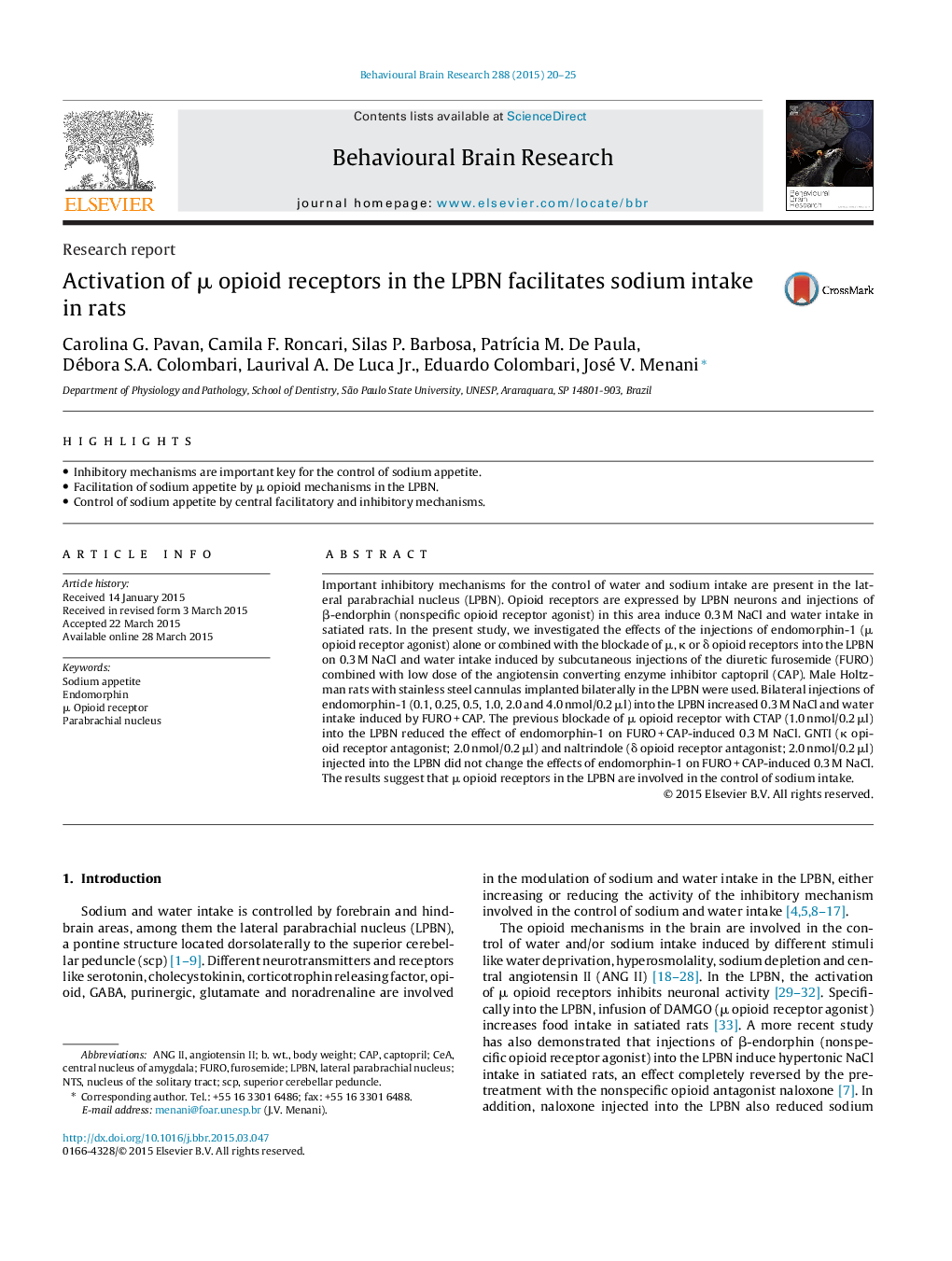| Article ID | Journal | Published Year | Pages | File Type |
|---|---|---|---|---|
| 6256698 | Behavioural Brain Research | 2015 | 6 Pages |
â¢Inhibitory mechanisms are important key for the control of sodium appetite.â¢Facilitation of sodium appetite by μ opioid mechanisms in the LPBN.â¢Control of sodium appetite by central facilitatory and inhibitory mechanisms.
Important inhibitory mechanisms for the control of water and sodium intake are present in the lateral parabrachial nucleus (LPBN). Opioid receptors are expressed by LPBN neurons and injections of β-endorphin (nonspecific opioid receptor agonist) in this area induce 0.3 M NaCl and water intake in satiated rats. In the present study, we investigated the effects of the injections of endomorphin-1 (μ opioid receptor agonist) alone or combined with the blockade of μ, κ or δ opioid receptors into the LPBN on 0.3 M NaCl and water intake induced by subcutaneous injections of the diuretic furosemide (FURO) combined with low dose of the angiotensin converting enzyme inhibitor captopril (CAP). Male Holtzman rats with stainless steel cannulas implanted bilaterally in the LPBN were used. Bilateral injections of endomorphin-1 (0.1, 0.25, 0.5, 1.0, 2.0 and 4.0 nmol/0.2 μl) into the LPBN increased 0.3 M NaCl and water intake induced by FURO + CAP. The previous blockade of μ opioid receptor with CTAP (1.0 nmol/0.2 μl) into the LPBN reduced the effect of endomorphin-1 on FURO + CAP-induced 0.3 M NaCl. GNTI (κ opioid receptor antagonist; 2.0 nmol/0.2 μl) and naltrindole (δ opioid receptor antagonist; 2.0 nmol/0.2 μl) injected into the LPBN did not change the effects of endomorphin-1 on FURO + CAP-induced 0.3 M NaCl. The results suggest that μ opioid receptors in the LPBN are involved in the control of sodium intake.
